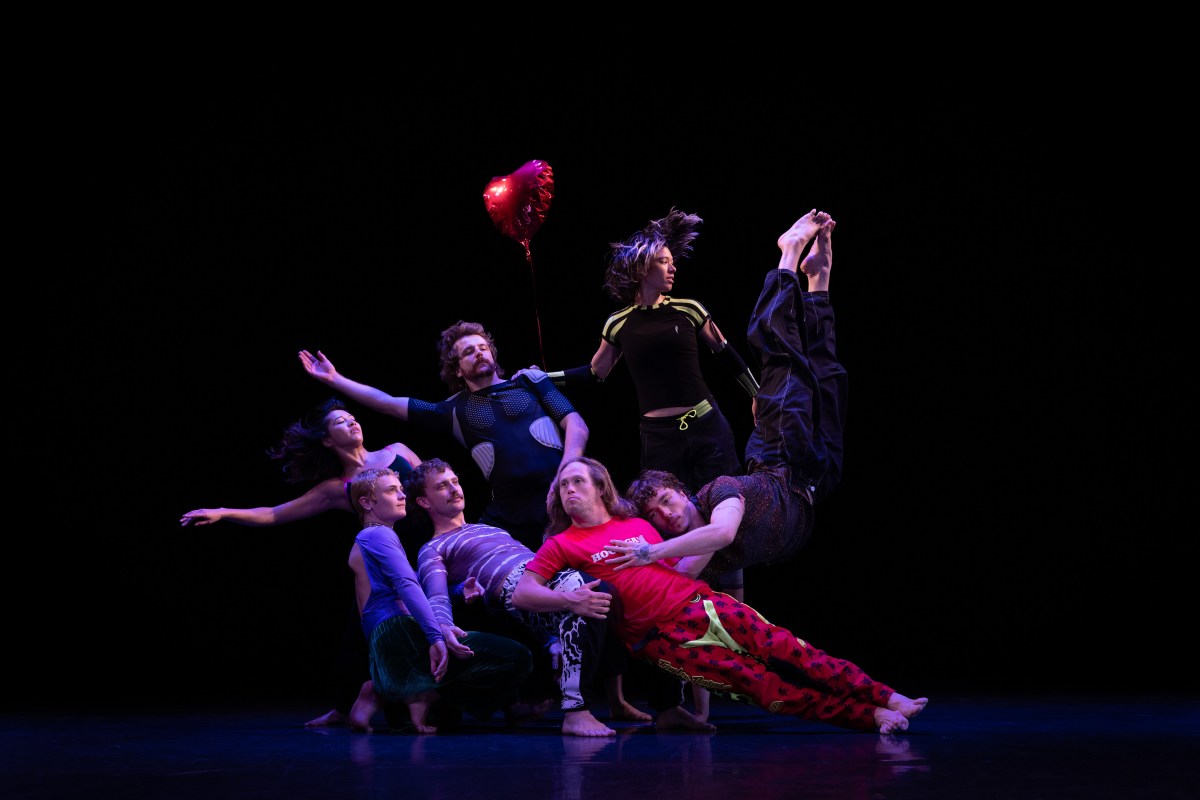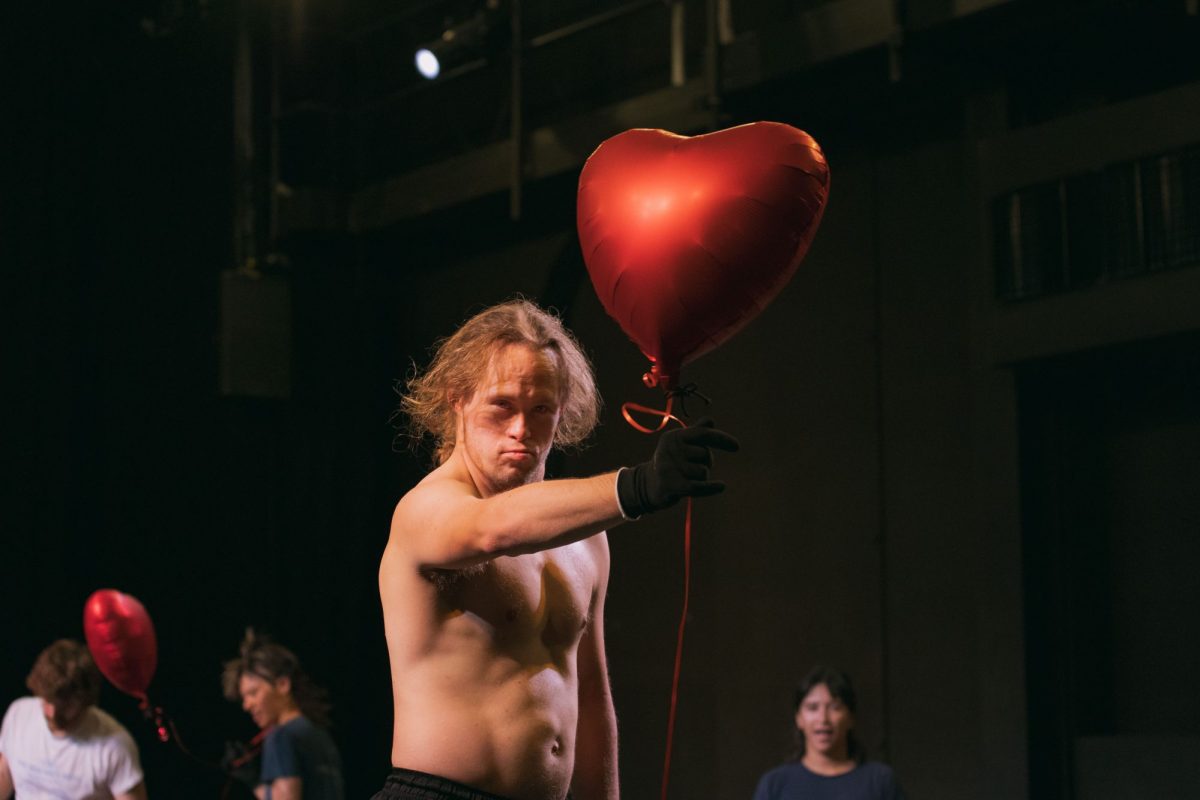Finding a long-term artistic collaborator is rare. Dancenorth Australia’s Artistic Director Kyle Page recounts first encountering Chris Dyke in a workshop in South Australia more than 10 years ago. He speaks of it akin to a professional, platonic love-at-first-sight moment.
‘Everyone was blown away by Chris’ lack of inhibition and generosity,’ Page tells ArtsHub. ‘And he and I just fell into this improvisation and connection. It was magic.’
Dyke became a fixture at Dancenorth, working in artist-in-residency programs and eventually developing a solo show, Lionheart, which travelled to Townsville, Melbourne and Adelaide. In 2024, Dyke is at the helm of his most ambitious project yet: Lighting the Dark, which is part of Brisbane Festival in 2024.
Dyke has Down syndrome, a fact that is mostly auxiliary to the professional partnership and artistic vision he shares with Page and Dancenorth.
‘We’re all good friends who work together,’ Dyke tells ArtsHub. Those relationships have helped shape a contemporary dance work filled with positivity. ‘When I dance, I feel powerful and strong,’ Dyke continues, ‘and I want the audience to feel that too.’
Banksy and the power of shadow
Dyke began talking about his vision for Lighting the Dark several years ago. He was inspired by some of his artistic heroes, Freddie Mercury and David Bowie. In an early workshop, Dyke also spoke to his collaborators about the power of Banksy’s work.
‘He was interested in what happens in the shadows,’ Page tells ArtsHub. ‘The idea that Banksy is anonymous and only makes this work at night, out of sight.’ Concepts of the unseen and invisible underpin everything in Lighting the Dark.
Where other artists may develop such themes into works that feel bleak or tortured, Dyke’s focus on joy and generosity reveals themes of hope and beauty in the shadows.
Each of Dyke’s artistic icons acts as a mirror in Lighting the Dark to reveal Dyke’s perception of the world. Dancenorth describes the piece as life-affirming and transformative.

The rise of the Down syndrome artistic community
In Australia and around the world, a growing body of work is being built with and by artists with Down syndrome. These include verbatim theatre, visual art exhibitions and dance works like Lighting the Dark.
Lighting the Dark is presented by Brisbane Festival and Choice, Passion, Life – a disability services provider. It exemplifies the intersection between contemporary and community artistic practices long established in regional Queensland. But more than that, Lighting the Dark also represents the significant culmination of the work of an artist who has received long-term artistic support and mentorship for over 10 years.
Artists with Down syndrome have also been at the forefront of some of Australia’s most commercially successful recent films including Kairos and Ride Like a Girl, as well as those from further afield like The Peanut Butter Falcon.
For many artists with Down syndrome, their art is more than a profession or hobby; it becomes their primary mode of self-expression and interfacing with the world. ‘For people with Down syndrome who may not find words easy to use,’ says Down Syndrome Australia, ‘art can also create a bridge for communication.’
Down syndrome awareness and advocacy broke through more barriers in 2024 with the ‘Assume That I Can’ viral campaign released as part of World Down Syndrome Day. The ad sees Down syndrome actress Madison Tevlin speak to camera about a range of prejudices. ‘Hey teacher,’ she says, ‘you assume I can’t understand Shakespeare, so you don’t teach me Shakespeare … your assumption becomes my reality.’
In talking with Kyle Page and Chris Dyke, it is clear that Dyke’s Down syndrome is not the centrepiece of their artistic exchange. Their reciprocal relationship has meant Page regards Dyke as an artist with an important point of view. ‘In the studio Chris agitates, percolates, considers and questions,’ Page says. ‘The subtlety of his awareness never ceases to amaze.’
Banksy, friendship and dance: the secrets to ‘awesomeness’
When asked about how other companies should work with artists with Down syndrome, Dyke is very clear. ‘At Dancenorth,’ he tells ArtsHub, ‘we’re all good friends. I love working with Kyle.’
Page feels the same way. ‘One of the deepest joys of my life is the friendship I share with Chris,’ he says.
Page and Dyke’s emphasis on their relationship mirrors the leading research into high-quality contemporary community-engaged arts projects. The Relationship is the Project, a book written by artists and researchers Jade Lillie and Kate Larsen, articulates the importance of trust and reciprocal relationships.
‘Community-engaged practice is not an art form,’ Lille and Larsen have said. ‘It’s not an add-on. It’s a way of working: a deep collaboration between practitioners and communities to develop outcomes specific to that relationship, time and place. It is social, cultural, environmental and political, and can be used as a framework to tell stories, explore issues, and deliver beautiful and powerful projects.’
Irrespective of disability, Page and Dyke’s relationship is also a high-quality format for nurturing emerging artists. Dyke’s partnership with Dancenorth is long term and has dynamically shifted over time, eventually blossoming into a large-scale work with Lighting the Dark.
‘Chris and I gently oscillate between the roles of both mentor and mentee, each stepping forward to support and nurture the creative practice and life of one another,’ Page says.
The work will be at the Thomas Dixon Centre, West End in September as part of Brisbane Festival.




